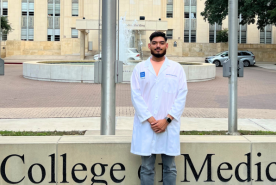There are no medicines that specifically treat C3G. Instead, current treatments aim to keep blood pressure, proteinuria (protein in the urine) and blood cholesterol levels low, and to control the immune system (the body's defense against infections).
The term C3G includes two conditions - dense deposit disease (DDD) and C3 glomerulonephritis (C3GN). DDD and C3GN are generally treated with the same medicines. No matter how severe their disease, all patients with high blood pressure and/or proteinuria between one-half to 1 gram per day, should take a blood pressure drug called an ACE inhibitor or an ARB. These drugs can help to lower blood pressure and also reduce proteinuria. Patients with high levels of lipids (fats like cholesterol) in the blood should also be treated with statins to reduce the levels of these substances. Statins help lower the risk for heart disease.
Practicing a healthy lifestyle should also be part of the treatment plan. Regular exercise and for some patients, following a kidney-friendly diet, are important parts of managing your C3G.
Read more about nutrition for patients with chronic kidney disease here.
Treatment of C3G may depend on its cause, if it can be identified
- Sometimes, C3G is caused by an autoantibody.
– Antibodies are made by the immune system, your body's defense system. Antibodies are proteins that normally fight germs that invade our bodies. Autoantibodies are abnormal antibodies that mistake our own organs and chemical reactions as invaders. Therefore, autoantibodies can attack us and make us sick. - If C3G is caused by an autoantibody, the following treatments may be used:
– Immunosuppressants: These drugs help prevent this attack on the body's own systems by “calming down” the immune system so it won't attack us. - C3G is a disease of the complement system
– The complement system is part of the immune system, and for that reason, immunosuppressants (drugs that “calm down” the immune system) have been used to treat C3G. These drugs include:- Glucocorticoids (corticosteroids, steroids)
- Rituximab
- Cyclophosphamide
- Mycophenolate mofetil (MMF)
- Tacrolimus
- Sirolimus
- Azathioprine
- Plasma exchange (plasmapheresis):
- Plasma, which is the fluid part of your blood that contains proteins, including any autoantibodies that may be present, is removed through a vein and is replaced with plasma that doesn't have those harmful proteins. Although plasma exchange has been tried in many patients with C3G, there is no proof that it always works. This may be because it is not possible to remove enough of these autoantibodies. - If you have genetic changes (mutations) linked with C3G, the following treatments may be used:
– Plasma infusion: Plasma infusion is used to replace missing proteins. Plasma is given through a vein to add the missing protein to your blood. Patients who are missing proteins that prevent C3G may receive plasma infusions after remission (symptoms of the disease have stopped). This type of therapy has been used successfully on only a very limited basis on a few patients with C3G.
– Plasma exchange: Plasma exchange is used to remove harmful proteins and to replace them with normal ones. Like plasma infusion, this type of therapy has been used on only a very limited basis on a few patients with C3G.
– Plasma infusion and exchange are hard to do. Whether this type of therapy is even possible depends on several factors. When these treatments can be used, the number of treatments varies a lot and depends on the specific protein that needs to be replaced.
Eculizumab is another drug known as a monoclonal antibody. This drug can specifically target the complement system and has been used to treat C3G.
Treating conditions that sometimes occur with C3G
C3G damages the kidneys. After the kidneys, the eye is most often damaged. Deposits of proteins from the complement system can build up at the back of the eye in an area known as the fundus. These deposits are known as drusen. An eye doctor can see them by looking into a patient's eye. If they are found and need to be treated, several different drugs can be injected into the back of the eye to stop their continued buildup. Patients with C3G should see an eye doctor regularly.
Clinical trials for new drugs
There are some promising treatments for C3G now being tested in patients. These potential drugs are all designed to target the complement system. Because the complement system is very complicated, each of these new drugs focuses on a different aspect of the complement system. However, these drugs are generally designed to “calm down” the over-activity of the complement system that is linked with C3G.
It should be noted that it can be hard to predict if and how well each drug can work on a patient with C3G. It is also difficult to predict if one of these drugs might be better than another for a given patient. You can learn more about the ways these treatments work and about the clinical trials for them here. You can also discuss the possibility of being part of a clinical trial with your healthcare team. If you have questions, you can also submit them to the National Kidney Foundation's C3G Expert Panel on the C3G Online Community for their opinion.
It is important to realize that over time, until an effective treatment is found, some patients with C3G, but not all, will slowly get worse until they reach kidney failure. If this happens, patients need a kidney transplant or dialysis to stay alive. Currently, it is difficult to predict which patients will progress to kidney failure and which patients will not. However, the ability for clinicians and researchers to predict what may happen is improving, but it's not a guarantee. Remember, C3G has a lifelong impact, so it is important for patients to keep up with their medical appointments, take their medicines, and stay with the treatment plan as recommended by their healthcare team.

















